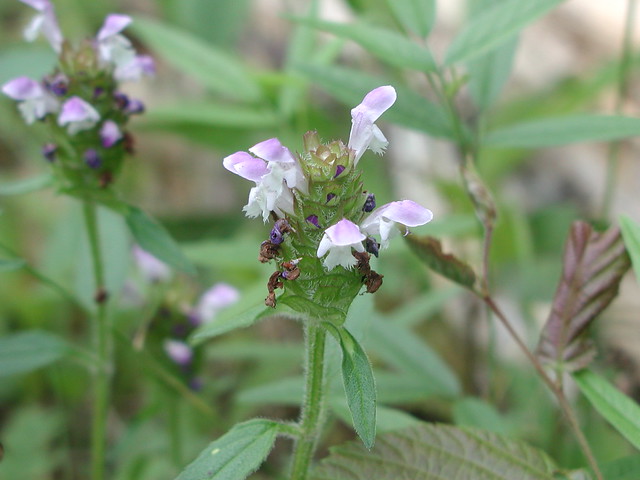Resource Library
Plant of the Week: Prunella vulgaris, Heal-All, Self-Heal
As I’ve gotten older I’ve become more familiar with the medical profession and their various elixirs. These pills and potions are but a modern day representation of what humankind has been doing for thousands of years: trying to find things that make us feel better. One of the most widely-distributed plants in the world, heal-all or self-heal (Prunella vulgaris), is probably so widely distributed because our ancestors found it useful, though modern medicine essentially ignores it.
Heal-all is one of about seven species belonging to the mint family distributed throughout the Northern Hemisphere. It is thought to be native to Eurasia but it was widely distributed before European exploration began and is listed in every state and all Canadian provinces. It typically grows in moist, disturbed spots and is sometimes seen in lawns as a weed. It shuns calcareous soils.
The plant grows as a creeping herb 12-16 inches tall with opposite, ovate, pubescent leaves on square stems. Flowers appear terminally in 2-inch-long elongated spikes (verticillasters) that are subtended by a cluster of leaves.
Blooms appear in late spring and early summer in shade of purple, purple and white or rarely white. The individual blooms are about the size of a honey bee, and are two-lobed with the upper lip three-tipped while the lower is larger, two-lipped and showier. The flowering stalks begin blooming at the base of the cluster and advance to the top.
Heal-all — or self-heal as Gerard calls it in his famous 16th century herbal — has a long history of medicinal use. He says it is used to heal all manner of wounds, both outside and inside the body. He even recommends making a compress of bruised leaves and vinegar and placing it on the forehead to help with headaches.
Though the herb has been used medicinally for centuries and all manner of heal-all products are sold on the Internet, there is little in the way of scientific research to support or repudiate its effectiveness. In the past few years some studies have looked at Prunella extracts in clinical trials using mouse cells, and found that their antioxidant properties may have beneficial effects.
While heal-all is not intentionally grown in gardens the closely related Prunella grandiflora is sometimes seen. It resembles heal-all closely but the flower head is more elongated, giving the larger flowers more room on the head for display. Colors range from white to pink and purple. It is best suited for partially shaded moist sites in the front of the perennial border or in the woodland garden where it can spread to form a small colony.
For more information about horticulture or to see other Plant of the Week columns, visit Extension's Web site, www.uaex.uada.edu, or contact your county extension agent. The Cooperative Extension Service is part of the U of A Division of Agriculture.
Pursuant to 7 CFR § 15.3, the University of Arkansas System Division of Agriculture offers all its Extension and Research programs and services (including employment) without regard to race, color, sex, national origin, religion, age, disability, marital or veteran status, genetic information, sexual preference, pregnancy or any other legally protected status, and is an equal opportunity institution.
